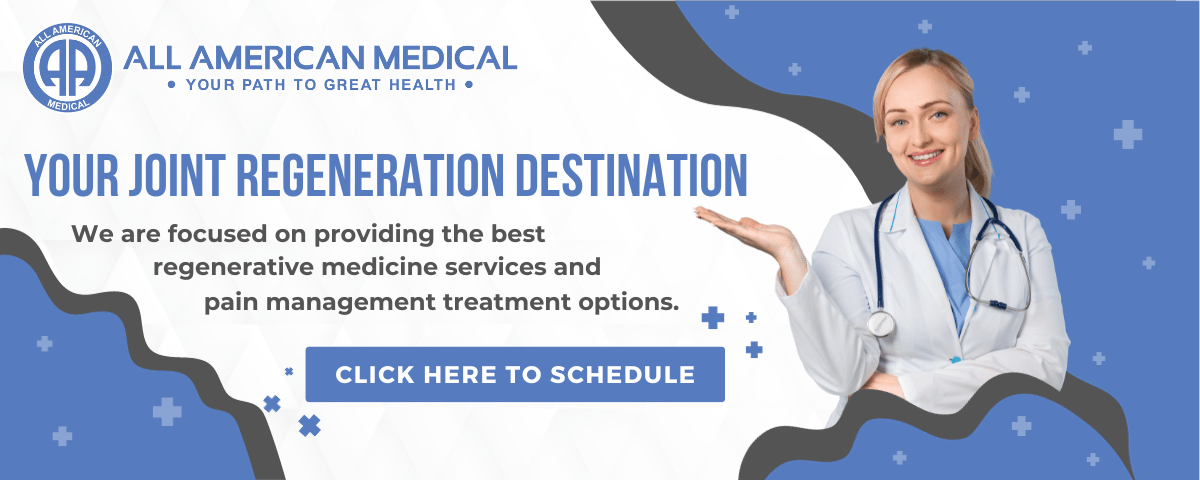
When we suffer injuries, whether through sports, the natural aging process, or conditions like arthritis, recovery can be challenging; traditionally, this path might include options like surgery, which can be challenging and require significant recovery time.
Regenerative medicine is an evolving field that can offer hope by leveraging the body’s healing capabilities. It presents a less invasive alternative to traditional surgery.
It aids the body’s natural repair process, potentially leading to quicker recovery and less reliance on extensive surgical procedures.
Let’s explain how regenerative medicine provides less invasive healing solutions and improves quality of life.
Understanding joint and tissue damage
Our bodies are resilient but not immune to damage. Joints and tissues can suffer for various reasons, leading to discomfort and reduced mobility. Injuries, like those from sports injuries or falls, are common culprits.
Aging also plays a significant role. As we grow older, our joints naturally wear down. Additionally, diseases like arthritis contribute to joint and tissue deterioration, leading to pain and stiffness.
The basics of Regenerative Medicine in joint and tissue repair
Two notable techniques in regenerative medicine are stem cell therapy and PRP injection therapy. Stem cell therapy utilizes the body’s fundamental cells capable of transforming into various cell types needed for repair. PRP injections and platelet-rich plasma therapy involve extracting platelets from the patient’s blood, elements known for their healing properties. They’re then reinjected into the affected area to expedite healing.
Both these approaches harness the body’s inherent healing abilities, providing alternatives to surgery or long-term medication dependence. They represent a shift towards natural repair and regeneration of tissues and joints, minimizing the need for more invasive procedures.

How Regenerative Medicine works to repair the body
Regenerative medicine is a breakthrough approach that stimulates and accelerates the repair and regeneration of damaged tissues in harmony with the body’s natural healing systems.
The healing mechanism
The process of regeneration begins at the cellular level. In stem cell therapy, stem cells are introduced to the damaged area. These cells are unique because they can potentially develop into many different types of cells.
Once administered, they can differentiate into specific cell types needed for repairing tissues. These include muscle, bone, and cartilage cells.
In PRP therapy, the focus is on platelets, which are rich in growth factors. Growth factors are proteins that play a vital role in healing. When concentrated platelets from your blood are injected into the injured area, they release growth factors.
These factors stimulate the repair process by attracting healing cells, increasing blood supply, and regenerating tissue. This effectively kickstarts and enhances the body’s natural healing process.
Advantages over traditional surgical methods
Regenerative medicine offers several advantages over traditional surgical methods:
- Lower Risk: These treatments are less invasive than surgery, carrying a lower risk of complications.
- Faster Recovery: As these procedures don’t involve surgery or hospital stays, there is a far shorter recovery period.
- Less Pain: Regenerative medicine often results in less post-treatment discomfort compared to the recovery associated with surgery.
- Comprehensive Healing: These therapies aim to restore the damaged tissues to their normal function, offering more lasting healing.
Who can benefit from Regenerative Medicine?
Regenerative medicine has opened new doors for patients seeking alternative treatments for various conditions.
It’s particularly beneficial for those dealing with:
- Osteoarthritis: Patients suffering from joint degeneration due to osteoarthritis can benefit significantly. Regenerative treatments can reduce pain and improve joint function.
- Chronic Pain Conditions: Those with chronic pain, such as back pain or repetitive strain injuries, may find relief through treatments that target underlying tissue damage.
- Post-surgical Recovery: Patients recovering from surgery can benefit from regenerative medicine to enhance tissue healing and reduce recovery time.
- Age-Related Degeneration: As the body ages, tissues naturally degenerate. Regenerative medicine can slow down or reverse some of these processes.
The future of joint and tissue repair
As we look towards the future, regenerative medicine is poised to revolutionize the field of orthopedics and tissue repair. This rapidly evolving area promises more advanced and effective treatments for various conditions.
Regenerative medicine is not just a treatment option for the present. It’s a foundation for the future. One where healing is more efficient, less invasive, and closely aligned with the body’s natural processes.

Final thoughts
Regenerative medicine represents a transformative shift in how we approach joint and tissue damage treatment. Moving beyond the constraints of traditional methods, it offers a path that aligns closely with the body’s natural healing processes. This innovative field of medicine not only brings hope to those suffering from chronic pain and degenerative conditions but also opens up new possibilities for more effective and less invasive treatments.
For anyone struggling with joint pain, sports injuries, or the wear and tear of aging tissues, regenerative medicine offers a promising alternative. With techniques like stem cell therapy and PRP therapy, there’s potential for symptom relief and genuine healing and recovery.
At All American Medical, we’re at the forefront of integrating these advanced treatments into our practice. We understand that each patient’s journey is unique, and we’re committed to providing personalized care tailored to your individual needs.
We’re here to offer expert care if you’re considering regenerative medicine as a solution for your joint and tissue concerns.
Contact us to learn how regenerative medicine can help you and discuss potential treatment plans.
